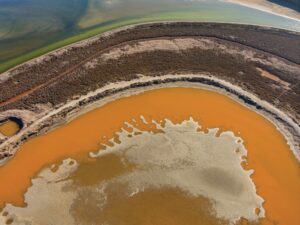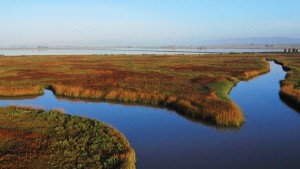On an August morning before a full moon, the minus tide in the Suisun Slough made paddling seem more like shoveling, but it also made for good wildlife viewing. Six river otters darted across the slough, and egrets foraged on the muddy banks.
My destination was Hill Slough Wildlife Area, the wetland gateway to the Suisun Marsh, where the state Department of Fish and Game is planning to breach ten external and internal levees. The breaches will open the marsh to tidal action and provide refuge for juvenile Delta smelt, splittail, and salmon. State officials hope to begin restoration next summer.
Six ponds on the 950-acre restoration site will be breached to create low, medium, and high tidal marsh profiles, leaving room for plants and animals to move upslope as sea level rises. The plan also calls for a two-mile loop trail east of Grizzly Island Road. This welcome public access (likely to open by the end of 2012) is, ironically, the result of an ongoing squabble between wetlands restoration planners and Pacific Gas and Electric Company. The trails run along levees that might also have been breached if not for obscure federal regulations requiring that power lines in tidal water accommodate sailboats, even if sailboats will never enter these shallow tidal sloughs. That usually means raising the lines above the hypothetical sailboat masts, and that means money. Lisa Stallings, project coordinator and Life Science! consultant, says the restoration here was altered to avoid costly infrastructure changes, though several towers west of Grizzly Island Road will be modified.
It’s not the first time that this has been an issue, and it won’t be the last. PG&E transmission lines crisscross the 36,000 acres of bayshore lands that have been identified as restorable. Last year, PG&E presented the U.S. Fish and Wildlife Service with a $16.8 million bill for the replacement of 11 towers in the South Bay Salt Ponds. Although an agreement was reached on this particular project and federal officials didn’t have to pay, the bigger issue hasn’t been resolved. “We really need to work through it on a larger scale instead of piecemeal,” says Mendel Stewart of the San Francisco Bay National Wildlife Refuge Complex. “This infrastructure can restrict or prohibit restorations in the future.”

.jpg)



